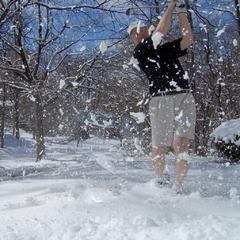Teaching Seminar
I recently came back from my PGA education seminar in Florida. The instructor, Joe Plecker, is a PGA Master Professional in instruction and GOLF Magazines top-100 instructor . Gosh, he made it look so easy. I just wanted to share some things he told us about.
It started by having a girl in the class stand up and get into a golf posture then take an imaginary swing. Her hip turn tried to turn around her right leg and the inside of her right foot came off the ground. He mentioned her knee position pointing inwards and the foot off the ground, and that the knee should be pointing more out than in and the feet on the ground. He adjusted her turn, now knowing how her specific body turns and it turned out she needed to have a left leg pivot.
Everybody has different physiques and they each work different ways. As far as hip turns on the backswing, he groups it into front, middle and back pivot, based on how the persons knees bend and balance. This pivot effects the downswing and how the body must move to hit the ball properly. He also talked about trail arm dynamics. Based on how the arm bends and turns determines what kind of release a person is capable of doing. It's hard to explain in writing so I may make a video on it.
When he teaches a student, he identifies body turn and trail arm dynamics in order to teach them a swing that their body is capable of doing.
A lot of instructors teach based on trying achieve that beautiful looking swing, but everybody has a different body type. While there may be key commonalities between them, you don't want to make them do something their body can't do.
These aren't brand new. It's just a different way to see the swing. Start with bio-mechanics, then go to the swing.









6 Comments
Recommended Comments
Create an account or sign in to comment
You need to be a member in order to leave a comment
Create an account
Sign up for a new account in our community. It's easy!
Register a new accountSign in
Already have an account? Sign in here.
Sign In Now